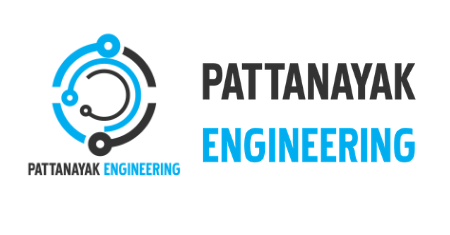
Introduction to Selenium
Selenium is an open-source and free automated testing suite for web applications that supports cross-browser and cross-operating-system interoperability. It is quite similar to HP’s QuickTest Pro (QTP, now UFT), only that Selenium focuses on automating web-based applications. Testing done through Selenium tool is usually referred as Selenium Testing.
Selenium is useful for testing web applications only. Neither desktop testing nor the testing of mobile applications software is possible with Selenium.
A web application is an application program stored on a remote server that is allowed to get accessed through a web browser over the Internet. Many websites contain web applications. Any website product and component that performs functions for users qualifies as a web application. Few examples of web applications are Google Search Engine & Ali Express.
Selenium Types
Selenium is not merely a testing tool but a suite of software, each catering to different testing needs of an organization. It has four components:
Selenium Integrated Development Environment (IDE)
Selenium Remote Control (RC)
Selenium Grid
Selenium WebDriver
Selenium Integrated Development Environment (IDE)
is a tool that helps you develop your Selenium test cases. It’s an easy-to-use Chrome and Firefox extension and is generally the most reliable method to develop test cases. It records users’ actions in the browser for you, using the existing Selenium commands, with parameters defined by the context of the web element. Previously known as Selenium Recorder, Selenium IDE was initially created by Shinya Kasatani, of Japan and contributed to the Selenium project in 2006.
It was introduced as a Firefox plugin for faster creation of test cases. As it was a Firefox extension, it could automate the browser through a record-and-play feature providing auto completion support and the ability to move commands around quickly.
Scripts are recorded in a special test scripting language called Selenese for Selenium. Selenese comes up with commands for carrying out actions in a web browser and restoring data from the resulting pages.
The advantage of Selenium IDE is that the tests recorded via the plugin can be exported in different programming languages like Java, Ruby, Python, etc.
Selenium RC (Remote Control)
Selenium Core was the first version. But with that version, testers had to install both Selenium (a JavaScript program) and the web server containing the web application being tested on their local systems so that they would belong to the same domain.
RC can support the following programming languages like Java, C#, PHP, Python, Perl, Ruby.
Selenium Grid
Selenium Grid is an automated testing tool that allows you to run your tests on various machines against different browsers. It is part of the Selenium suite that specializes in running multiple tests across different browsers, operating systems, and machines. You can connect to it with Selenium Remote Control by stating the browser version, browser, and operating system as per your choice. You will be able to specify these values through Selenium Remote Control capabilities. With Selenium Grid, one server makes a move as a hub. Tests communicate to the hub to get access to browser instances.
Selenium Grid allows parallel testing and also allows managing different browser versions and browser configurations centrally (instead of in each individual test).
There are different and various online platforms that provide an online Selenium Grid that you can access to run your Selenium automation scripts. For example, you can use Lambda Test.
Selenium Grid has more than 2,000 browser environments over which you can run your tests and truly automate cross-browser testing.
Selenium Web-driver
Founded by Simon Stewart in 2006,Thought-works consultant in Australia. Selenium Web-driver was the first platform testing framework that would control the browser at the OS level. Selenium Web-driver is a successor to Selenium RC. Selenium Web-driver accepts commands that is sent by Client API and sends them to a browser.
Locating and testing of web elements in the web application is implemented through a browser-specific driver. It controls the browser by directly communicating with it.
In Selenium Web-driver, you have the liberty to write test scripts in different programming languages like Java, Perl, Python, Ruby, C#, PHP, and JavaScript. But, make a note that Mozilla Firefox is Selenium WebDriver’s default browser.
Web-driver was introduced as part of Selenium v2.0. Selenium v1.0 consisted of only IDE, RC, and Grid. But the major breakthrough in the Selenium project was when Web-driver was developed and introduced as an addition in Selenium v2. And, with the release of Selenium v3, RC has been deprecated and moved to a legacy package. Although you can still download web-driver and carry out tasks with RC, there wouldn’t be any support for it in Selenium v3.
Let us know what is so special about Selenium:
Mixing of tool and DSL –
Selenium is an absolute combination of tools and DSL (Domain Specific Language) in order to carry out various types of tests. It allows you to record the tests carried out through the browser. It supports multiple web browsers like Internet Explorer, Safari, Firefox, Chrome, etc.
User friendly language –
Selenium uses DSL in order to test the web applications. This language includes 200 commands and is an easy programming language to learn.
Multiple Operating System –
Once the test cases are prepared, they can be executed on any operating system like Linux, Macintosh, etc.
Reduce test execution time –
Selenium supports parallel test execution that reduces the time taken in executing parallel tests.
Lesser materials required –
Selenium requires lesser resources when compared to its competitors like UFT, RFT, etc.
Drawbacks of Selenium
Incomplete solution –
Selenium requires third party frameworks in order to completely automate the testing of web applications.
Requires high skills –
Though it supports multiple programming languages, it requires a high-level proficiency to deal with it effectively.
Hard to modify codes –
The scripts written in Selenese is not user-friendly which makes it hard to modify the codes.
Tougher to support other browsers –
Selenium faces difficulties when tried to implement in any browser other than Firefox.
Conclusion:
If You have any queries you can drop your questions below,
we will be happy to solve your problems.
Thanks for reading…!!!
Pattanayak Engineering


